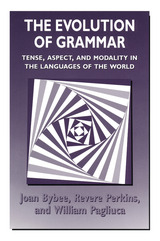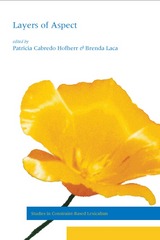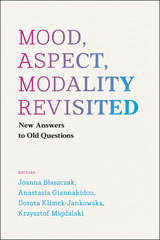
Through a survey of seventy-six languages in twenty-five different phyla, the authors show that the same paths of change occur universally and that movement along these paths is in one direction only. This analysis reveals that lexical substance evolves into grammatical substance through various mechanisms of change, such as metaphorical extension and the conventionalization of implicature. Grammaticization is always accompanied by an increase in frequency of the grammatical marker, providing clear evidence that language use is a major factor in the evolution of synchronic language states.
The Evolution of Grammar has important implications for the development of language and for the study of cognitive processes in general.

The eight articles in this volume reexamine the syntactic and semantic analyses of aspect that have been proposed mainly on the basis of aspectual expressions in English. The authors contrast expressions sharing an analogous morpho-syntactic make-up and some core distributional and semantic properties, drawing on a wide range of new empirical data from languages as diverse as Syrian Arabic, Urdu, Brazilian Portuguese, Russian, Indonesian, and German. The papers address four aspect-related problems in particular: the grammatical and semantic constraints on the different readings of the present perfect, the semantic and syntactic analysis of auxiliaries, the impact of adverbial expressions on the aspectual properties of the sentence, and morphology-semantics mapping.

Current literature assumes a straightforward link between grammatical category and semantic function, and descriptions of well-studied languages have cultivated a sense of predictability in patterns over time. As the editors and contributors of Mood, Aspect, Modality Revisited prove, however, this predictability and stability vanish in the study of lesser-known patterns and languages. The ten provocative essays gathered here present fascinating cutting-edge research demonstrating that the traditional grammatical distinctions are ultimately fluid—and perhaps even illusory. Developing groundbreaking and highly original theories, the contributors in this volume seek to unravel more general, fundamental principles of TAM that can help us better understand the nature of linguistic representations.
READERS
Browse our collection.
PUBLISHERS
See BiblioVault's publisher services.
STUDENT SERVICES
Files for college accessibility offices.
UChicago Accessibility Resources
home | accessibility | search | about | contact us
BiblioVault ® 2001 - 2024
The University of Chicago Press









